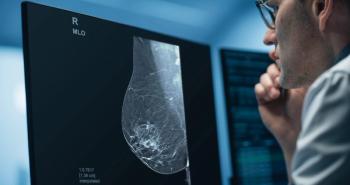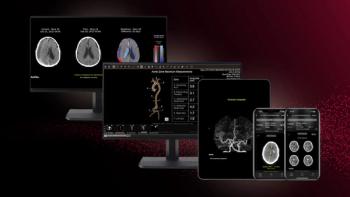
Trixell focuses on vascular market with new fluoro flat detector
Company plans detectors for other applicationsFlat detectors are picking up momentum in the x-ray market, according to French supplier Trixell, which sold about 1000 such detectors in 2003-double the installed base prior to that
Company plans detectors for other applications
Flat detectors are picking up momentum in the x-ray market, according to French supplier Trixell, which sold about 1000 such detectors in 2003-double the installed base prior to that year. Demand is expected to rise even more in the year ahead with the commercial release of Trixell's latest product, the Pixium 4700, a fluoro detector showcased at the RSNA meeting for neurological and general vascular applications.
Pixium 4700 captures a 30 x 40-cm area, delivering 30 frames per second with pixel size of 154 microns. It is the company's third solid-state detector. Its first, Pixium 4800, is designed for cardiovascular work; the second, Pixium 4600, is dedicated to radiography.
"These detectors have been phased in at high-end applications for radiology, cardiology, and now general vascular applications," said Trixell CEO Paul de Groot. "Ultimately they will replace image intensifiers (IIs) and film, but the speed with which that occurs will depend on decreasing their price."
The lower cost of IIs will make these products a viable alternative for many years. They will continue in the marketplace at least until 2010, de Groot said. CCD-based cameras, which record the projected fluoroscopic images in high-resolution digital form, are the pieces that link these existing technologies to the future. Recent developments in CCD technology underscore that point.
"These imaging chains supply a fully digital image, particularly the 1K CCD cameras, which definitely present more of a challenge for flat-panel technologies than before," he said.
Flat detectors offer an advantage in size and weight, which is a plus in applications where compactness is needed to get the right image. Flat detectors are unaffected by magnetic fields and, under the right circumstances, can deliver higher resolution than conventional IIs.
Trixell's latest development is now undergoing clinical tests in Siemens' Axiom Artis dTA and Philips' Allura Xper FD20, both shown as works-in-progress at the RSNA meeting. The two products are being groomed for interventional angiography. The compact detectors are especially suited to high-resolution rotational studies, during which volumetric data sets can be acquired for reconstruction.
Trixell is the chief supplier of flat-panel technology to both Siemens and Philips. The two European companies are partners in Trixell with Thales Electron Devices.
The joint venture's road map for flat detectors does not end with the Pixum 4700. Company strategists are planning the development of a universal-purpose detector for general radiography and fluoroscopy, a portable radiography detector, and a mammography plat panel.
Newsletter
Stay at the forefront of radiology with the Diagnostic Imaging newsletter, delivering the latest news, clinical insights, and imaging advancements for today’s radiologists.




























